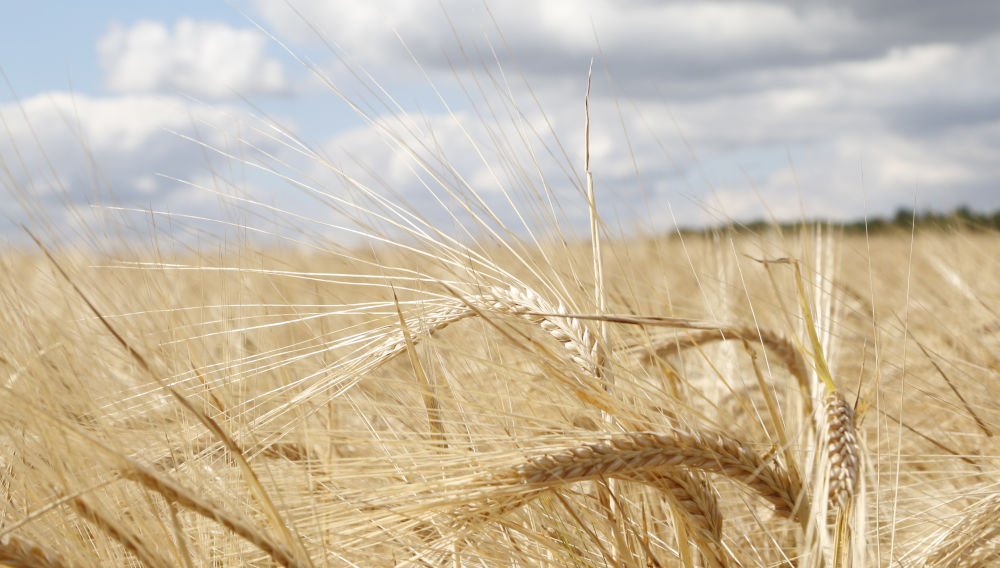Barley supply could be sufficient for the coming year
Stable situation | The supply of summer malting barley from this year's harvest in Europe remains good. Although there is talk of regional complaints about quality, supplies should be secure for the next twelve, thirteen, perhaps fourteen months. Difficulties remain with logistics and uncertainty with gas supplies.
Denmark can go to market again this year with a surplus of 900,000 tons to 1.0 million tons of barley. A slightly larger area and better yields than last year are the reasons. Although low protein levels between 9.0 to 10.0 percent are reported. This will result in a rather low FAN (free amino nitrogen) content. For brewers, it is an important nutrient needed by yeast cells during fermentation. However, low protein levels are said not to have been a problem in previous shipments. There is also talk of good quality and quantity results from Sweden.
The mixed qualities from France due to an average high protein value remain an issue. The average is around 11.3 percent. Lots with 13 percent are also included. The export surplus for spring barley is nevertheless seen at 1.69 million tons. Overall, the surplus for malting barley is generally expected to be 2.96 million tons. Great Britain can also look back on a good harvest. Nevertheless, the area has been significantly reduced. Thus, the export potential remains estimated at around 340,000 tons. Up to 600,000 t may well have been in other years.
Germany also had a good harvest, although there is talk of regionally differentiated qualities. It is also noted that malting barley that received little water during the growing season has lower malt extracts. Estimates of the proportion of spring barley sown in the fall vary. However, some proportion could be added to the official 360,000 ha. A similar trend is expected for the coming year. The trend toward fall-sowing spring barley in the fall could increase this year. This cultivation is often characterized by high yields. Nevertheless, Germany remains an importer for malting barley. The area in Austria has been reduced again. An import requirement of around 40,000 to 50,000 t is expected.
A good harvest with good qualities is also reported from the Czech Republic. An export surplus of about 300,000 t is also expected. Nevertheless, as in other years, little product has been offered so far, for example in Bavaria.
Mid of November, the market is described as quiet on the whole. However, the acceptance of barley by maltsters has become somewhat brisker. This suggests good malt call-offs by the breweries. This is because positions are hardly ever taken on the part of the maltsters. Behind the demand is usually a malt sale. Export malting plants are particularly active. Here, demand remains very good. Barley was already well called off from the harvest, even for dates in advance. Stocks had to be replenished.
Breweries could be supplied until the end of the first quarter of next year. For the period after that, there should still be a demand for malt. The supply of malting barley may suffice for the remainder of the marketing year, provided there are no exceptional exports. Nevertheless, it cannot be ruled out that stocks will be depleted by the end of the marketing year. There is no supply for larger surpluses. Currently, prices around 405.00 €/t are called in November franko Upper Rhine for a malting barley. In January 2023, it is 410.00 €/t. In the past period, these demands had also fallen back to below 400.00 €/t. October 2023 is also discussed with 395.00 €/t to 400.00 €/t. The interim bull market in the grain market due to Russia's withdrawal from the grain agreement with Ukraine was only marginally noticeable in the malting barley sector. Fob Denmark at the moment is called 335.00 €/t in November. The 2023 October to March 24 crop is also discussed at 335.00 €/t. Business does not take place to this, however. Great Britain is with fob 340,00 €/t in November 22 slightly above the ideas from Denmark.
Difficult for the business remains the tense and expensive logistics. There continues to be a shortage of trucks and cargo space on ships. The uncertain supply of gas in the new year also continues to form an unpredictable side to production.
The area for spring barley in the new year in Europe is estimated to be relatively neutral. A larger supply is hardly to be expected, even if the variant of fall sowing is increasingly used and can provide for a certain increase. It remains to be seen how the decision for or against corn will turn out. Poor experience this year and high gas prices for drying are expected to lead to a regional exit from grain corn. Others assume that the weak stocks from this year will be replenished with new silage corn. The willingness to sell new crop malting barley leaves much to be desired, despite very good premiums to feed barley.



